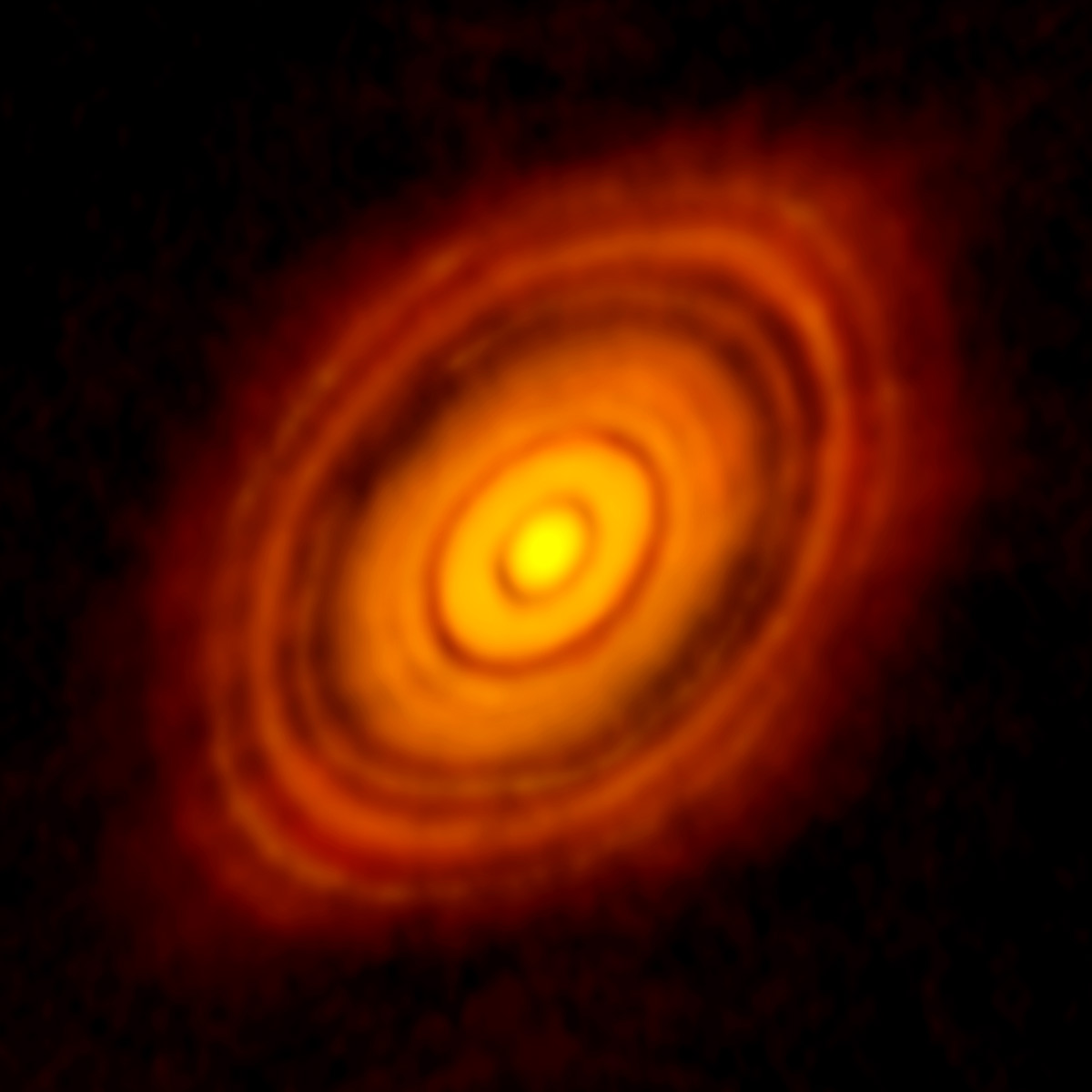

At the very center of the image above is the sun-like star HL Tau, surrounded by rings of dust and gas. You may never have heard of HL Tau, but this picture will go down in the astronomic annals as the first high-resolution image of the birth of a planetary system. Using the Atacama Large Millimeter/submillimeter Array (ALMA), an international observatory in northern Chile, scientists were able to capture this image, showcasing the early stages of a planetary system forming around HL Tau—a celestial ultrasound of a distant solar system..
HL Tau, sometimes called HL Tauri, is located 450 light years away in the constellation Taurus. The star has been the subject of numerous studies, and researchers had already discovered at least one embryonic planet in orbit around the star, but they hadn’t actually been able to observe its planetary formation first-hand. They knew that there was a disc of dust and other pre-planetary material surrounding the star, and they even were able to observe the magnetic field of the disc. But with the high-resolution capabilities of ALMA, they were able to get a beautiful image of the birth of planets.
“When we first saw this image we were astounded at the spectacular level of detail. HL Tauri is no more than a million years old, yet already its disc appears to be full of forming planets. This one image alone will revolutionize theories of planet formation,” Catherine Vlahakis, ALMA Deputy Program Scientist and Lead Program Scientist for the ALMA Long Baseline Campaign said in a statement.
In the image above, HL Tau is shining brightly in the very center of the ringed disc. The surrounding bright rings are just dust and gas in orbit around the star, but as they circle HL Tau, the particles of dust smash into each other, sticking together and forming larger and larger bodies. Eventually, these bodies build up into proto-planets, large enough to clear a path through the dust and gas; the trails of these early planets are visible in the image above as dark rings.
“Most of what we know about planet formation today is based on theory. Images with this level of detail have up to now been relegated to computer simulations or artist’s impressions. This high resolution image of HL Tauri demonstrates what ALMA can achieve when it operates in its largest configuration and starts a new era in our exploration of the formation of stars and planets,” Tim de Zeeuw, Director General of the European Southern Observatory said in a statement.
As you can see in the comparison below, HL Tau’s planetary disc (left) stretches for a much greater distance than our own solar system (right). Scientists estimate that even though HL Tau is smaller than our sun, the distance from it to the edge of the pre-planetary disc of dust and gas is three times larger than the distance of our sun to Neptune (2,798,000,000 miles).

The image taken by ALMA is particularly exciting for researchers, because it demonstrates the capabilities of the array located in Chile. ALMA captures images in wavelengths that are much longer than the wavelengths of visible light, which in this case allowed them to see the structure of the cloud surrounding HL Tau. If they had tried to look at it using an instrument that collected visible light, the dust and gas would have gotten in the way, yielding an image that was not-so-clear (or as exciting).
